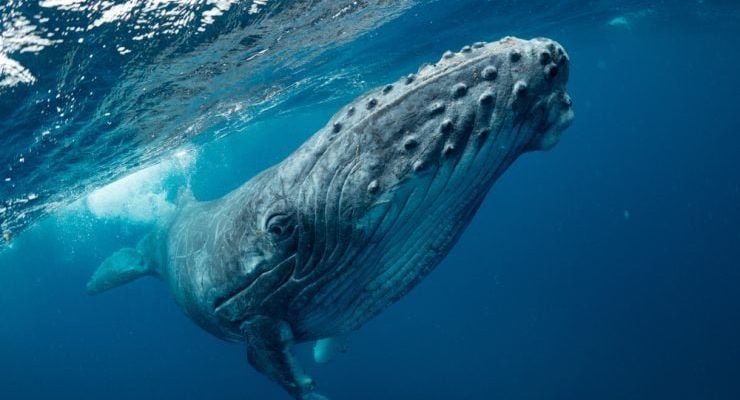
Let’s dive into the world of humpback whales and explore their habitats. From the vast oceans to the occasional rivers, these whales have a diverse range of living environments. Grab your favorite beverage, and let’s learn about their homes and migratory patterns.
Migration Patterns of Humpback Whales
One of the most intriguing aspects of humpback whales is their incredible migration. Unlike many animals that stay put, humpback whales travel thousands of miles each year. They typically migrate between feeding grounds in colder waters and breeding grounds in warmer areas.
* Feeding Grounds: During the summer months, humpbacks can be found in nutrient-rich Arctic and Antarctic waters. Here, they feast on schools of fish and krill, building up their fat reserves for the long journey ahead. Areas like Alaska and the Gulf of Maine are famous for their summer humpback populations.
* Breeding Grounds: When winter arrives, these whales make their way to warmer waters, often near tropical regions like Hawaii or the Caribbean. This is where they breed and give birth. The warm, shallow waters provide a safe environment for mothers and their calves.
This seasonal migration is a vital part of their life cycle, linking their feeding and breeding habitats across vast distances. It’s like they have a built-in GPS that guides them home.
Humpback Whales in Oceans
Humpback whales are predominantly found in oceans around the world. They thrive in both temperate and polar regions, showcasing their adaptability. Here are some key oceanic areas where they are commonly spotted:
* The North Pacific: The waters off the coasts of California, Alaska, and British Columbia are well-known for humpback whales. During the summer, they gather to feed in these bountiful seas.
* The North Atlantic: From the coasts of Maine to the feeding areas off Newfoundland, humpbacks are a seasonal sight. Their singing can often be heard underwater, especially during mating season.
* The Southern Hemisphere: In places like Hawaii, Australia, and New Zealand, humpbacks migrate to breed. The warm waters are essential for calf development, making these areas critical for the species’ survival.
You might be wondering about the types of habitats these whales prefer. Generally, they favor deep waters for feeding but can often be found in shallower areas when they’re breeding or nursing their young.
Rivers and Coastal Areas
While humpback whales are ocean dwellers, they occasionally venture into coastal areas and even rivers, though this is less common.
* Coastal Waters: Areas near shorelines, especially during the breeding season, can attract humpbacks as they look for safe places to give birth. They often swim into bays or estuaries where the water is warm and sheltered.
* Rivers: Though they typically don’t inhabit rivers, there have been rare sightings of humpbacks in inland rivers, especially when searching for food. For example, they’ve been documented swimming up the San Francisco Bay.
Humpback whales are primarily oceanic creatures, but their occasional presence in these environments shows their adaptability and curiosity.
Conservation Status and Habitats
Unfortunately, humpback whales have faced challenges due to human activities. Their habitats are influenced by factors like pollution, ship traffic, and climate change.
* Threats to Their Habitat: Ocean noise pollution can disturb their communication and breeding behaviors. Additionally, shipping lanes can pose risks of collision, putting these magnificent creatures in danger.
* Conservation Efforts: Fortunately, many organizations are dedicated to protecting humpback whales and their habitats. Marine sanctuaries and protected areas have been established in key locations, ensuring that these whales have safe places to breed and feed.
Understanding where humpback whales are found is crucial for their conservation. By taking steps to protect their habitats, we can secure their future and continue to enjoy their beauty for generations to come.
How to Spot Humpback Whales
If you’re eager to see humpback whales in their natural habitat, there are some tips to enhance your whale-watching experience.
* Best Times to Go: The timing of your trip matters. Plan your outing during peak migration seasons, which vary depending on whether you’re in the Northern or Southern Hemisphere.
* Choose the Right Locations: Some of the best whale-watching spots include places like Maui, Alaska, and Cape Cod. These regions provide opportunities to spot humpbacks as they breach or spout water.
* Use Whale-Watching Tours: Professional tours often have knowledgeable guides who can help you spot whales and educate you about their behaviors. They know the best locations and times to find these majestic animals.
Whale-watching can be a magical experience, and understanding where to look increases your chances of witnessing the elegance of humpback whales firsthand.
Humpback whales are remarkable creatures that roam our oceans, embodying the beauty and mystery of marine life. From their long migrations between feeding and breeding grounds to their occasional forays into coastal areas, they demonstrate adaptability and resilience.
Understanding where humpback whales are found helps us appreciate their journey and the importance of protecting their habitats. By respecting their environments and supporting conservation efforts, we play a role in ensuring these majestic animals continue to thrive in our oceans. So, the next time you hear a whale song or catch a glimpse of a humpback breaching the surface, remember the journey they’ve made to be there.

